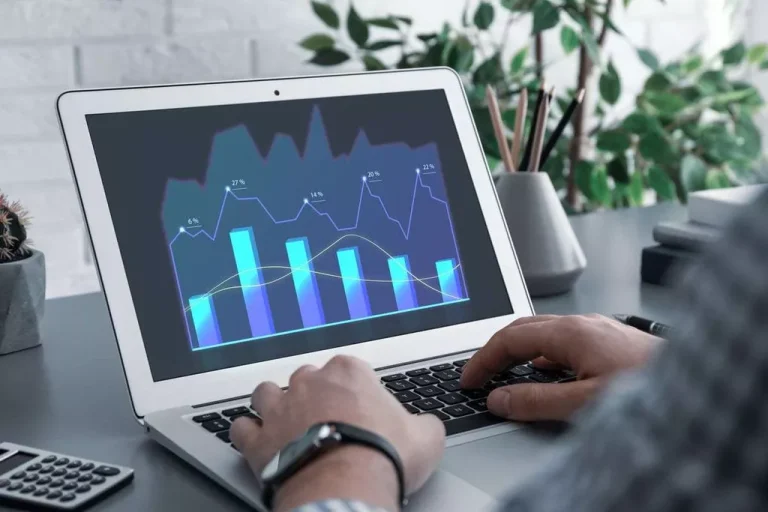Content
Identifying these Forex entry points can give traders an edge, allowing them to align with the upward movement anticipated by the collective market sentiment and the strategies of institutional traders. Because buy-side analysts typically work for institutions like mutual Bitcoin funds, hedge funds, or pension funds, their compensation is often tied to the performance of their investment recommendations. As such, they can receive substantial bonuses if their advised investments perform well, reflecting the direct impact of their work on the fund’s success. The sell-side of the financial market is responsible for creating, promoting, and selling traded securities to the general public. This helps generate liquidity by ensuring the availability of trades for distribution and facilitating the exchange of financial assets. Though the concepts might be a bit foreign to traders who are used to a more traditional technical analysis approach, there is a reason that the ICT methodology has become so popular.

The Difference Between Sell-Side and Buy-Side M&A
Sell-Side firms have far more opportunities for aspiring analysts than Buy-Side firms usually have, largely due to the sales nature of their business. Liquidity is the ability of a market to absorb large orders without significantly affecting the asset’s price. Buy-side liquidity refers to the ability of buyers to buy large amounts of contracts without significantly affecting the https://www.xcritical.com/ price.
Barclays’ Pip Ranson-Walters: Executing Broker’s Role in Trade Completion and Client-Driven Execution

While beginners can adopt ICT strategies, it is recommended that they have a solid grasp of fundamental concepts. Beginners may also find it beneficial to start with simpler trading techniques and gradually work their way up to more advanced tactics. We offer a set buy side liquidity vs sell side liquidity of proven indicators and advanced Algos/Systems that help traders to get the edge they deserve.
Defining Buy Side Liquidity in the Forex Market
These recommendations, made exclusively for the benefit of the fund that pays for them, are not available to anyone outside the fund. If a fund employs a good analyst, it does not want competing funds to have access to the same advice. A buy-side analyst’s success or talent is gauged by the number of profitable recommendations made with the fund. The intersection of buy side trading and liquidity provision is a dynamic that beckons skilled traders to attune their strategies accordingly. It underscores the necessity of acknowledging the substantial gravity buy side players exert in the Forex arena – an acknowledgement that can elevate a trader’s ability to sail in harmony with the market’s ebbs and flows.
Is Private Equity Buy-Side or Sell-Side?
- Asset Manager A is a buy-side firm that manages a portfolio of securities on behalf of its clients.
- See our Terms of Service and Customer Contract and Market Data Disclaimers for additional disclaimers.
- This would represent most of the market share in terms of liquidity provision.
- Tamta is a content writer based in Georgia with five years of experience covering global financial and crypto markets for news outlets, blockchain companies, and crypto businesses.
- The job of a sell-side analyst is to convince institutional accounts to direct their trading through the trading desk of the analyst’s firm—the job is very much about marketing.
- Liquidity pools in Forex trading refer to areas within the market that hold substantial order volumes.
Financial markets consist of two primary sectors–the sell-side and the buy-side. DealRoom facilitates numerous M&A transactions annually for organizations across both sectors. At the most junior positions, roles may be very similar, but at more senior positions the roles start to vary more significantly. As the word “sell” implies, on the sell side there is more salesmanship required than is usually the case on the buy-side.
The bankers conduct a thorough financial modeling analysis and due diligence to gauge investors’ perception of the company’s value. They then create various marketing materials, including detailed financial statements and Excel reports, distributing the information to potential investors on the buy-side. This process completes the cycle of capital flow in financial markets, where the sell-side facilitates the issuance and distribution of securities to meet corporate financing needs.
The theoretical underpinnings of liquidity take on practical significance in the context of private equity transactions. For instance, let’s consider a scenario where you’re looking to acquire a company with a low current ratio. This liquidity crunch may signal difficulties in meeting short-term obligations, prompting you to reassess your acquisition strategy or seek avenues forperformance improvement pre-acquisition.
Conversely, mostly retail driven markets are traditionally harder impacted by such crisis and have a harder time coming back and regaining strength. The advantage of a broker sitting in the middle is that it polls all the prices from multiple ELPs in one place, enabling the buy side to pick the best one. This would represent most of the market share in terms of liquidity provision. Industry sources say that nearly all buy-side heads of trading are interested in experimenting with direct bilateral liquidity, but the actual volumes are still relatively small. Some believe that volumes will dramatically change when ELPs become more efficiently integrated into the buy side’s workflow.
Investment bankers and corporate finance advisors play the same role for private issues of debt and equity. While buy-side and sell-side analysts are both responsible for performing investment research, the two positions occupy different roles in the securities market. With respect to investment firms, “buy-side” and “sell-side” do not refer to buying and selling individual investments, but to investment services. A sell-side analyst works for a brokerage or firm that manages individual accounts and makes recommendations to the clients of the firm. A buy-side analyst usually works for institutional investors such as hedge funds, pension funds, or mutual funds.
The price will always seek liquidity to either reverse or continue in the current move.
Sell-side liquidity allows sellers to sell securities in large amounts without impacting prices. It gives flexibility for setting specific selling prices or selling at the current market price. Conversely, selling liquidity refers to a point on the chart where long-term buyers will set their stop orders. Traders frequently make incorrect predictions in areas where they find these points.
They strategically leverage the collected buy orders at these highs to drive prices upward. They create good conditions for buying and selling assets, making the most of price changes to get more money. Market orders, on the other hand, involve buying or selling at the current market price.
One of the most popular trading philosophies out there today is the ICT methodology. Short for Inner Circle Trader, and utilized by many in The Strat community, this style of trading is purely based on price action and incorporates little to no use of trend following or momentum indicators. It’s important to identify liquidity on several timeframes so you can have a clear picture of the market. However, if you’re scalping, you only want to focus on relevant timeframes for liquidity levels such as the 30 minute or 1 hour. The timeframes to use for identifying your liquidity levels should be in relation to the timeframe you prefer to trade on. A sharp increase in volume around key levels can indicate a potential breakout, which can lead to the price moving further into the liquidity zone.
Understanding these key phases allows traders to navigate the complexities of the market with greater precision. By identifying critical points such as Market Structure Shifts (MSS) and Fair Value Gaps (FVG), traders can pinpoint potential entry and exit opportunities, thus managing risk more effectively. Once the manipulation phase concludes and the market shifts structure, it often moves into the Distribution Phase. In this phase, the market participants who accumulated positions earlier start to distribute or sell off their holdings. The distribution phase is characterized by a downward movement in price as selling pressure increases. On the flip side, if you’re looking to sell a portfolio company with a robust cash ratio and strong cash flow generation, potential buyers may perceive the company as financially resilient.







No Response to "How Liquidity Crisis impact markets micro- and macro-structure"